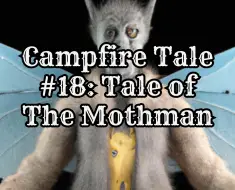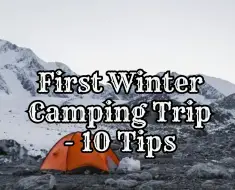
When venturing into the wild unknown, a dependable shelter is paramount. This applies to both hiking mountainous terrains or camping amidst snowy landscapes. One such reliable option is the 4-season tent. This is a sturdy, adaptable abode that can weather a range of climatic conditions and come out unscathed. As you dive into our master guide, you’ll discover what sets a 4-season tent apart from the rest. Bottom line, it’s the strategic choice of materials and the engineering ingenuity behind its structure. You’ll learn how to wisely choose the right 4-season tent that caters to your needs, including factors such as cost, size, weight, and ease of set up. Furthermore, you’ll also gain invaluable knowledge on how to maintain and preserve your tent, thus ensuring its longevity.
Ten tips for winter camping before you select your tent.
What is a 4-Season Tent?
Understanding a 4-Season Tent
A 4-season tent is a type of outdoor shelter particularly designed to withstand the harshest weather conditions throughout all four seasons of the year. These tents are specifically for venturing into high-altitude destinations and expeditions in extremely inclement weather. The structure, materials, and design of these tents allow them to repel heavy snowfall. Not to mention, withstand strong winds, and provide insulation from freezing temperatures. This makes them an essential gear piece for mountaineers, explorers, and winter campers.
Unique Features of a 4-Season Tent
Unlike regular tents, 4-season tents boast several unique features that enable them to stand up to varied weather elements. They typically have a geodesic or dome style structure. This helps to distribute the weight of accumulated snow and resist collapse. Thank goodness for great engineering. Their construction includes stronger, heavier materials than 3-season tents to support extreme wind and precipitation. The walls and floors of these tents are usually made with a high denier fabric. This material is both durable and waterproof. Ventilation is another vital aspect of 4-season tents to prevent condensation inside. Strong poles, additional guy lines, and anchors add to this tent’s stability against severe elements.

The Difference from Other Types of Tents
The key distinction between 4-season tents and other types like 3-season tents rests largely in their intended usage. A 4-season tent lives for extreme weather. Whereas a 3-season tent is designed for milder weather conditions. Specifically spring, summer, and fall and these tents are not suitable for heavy snow or strong winds. The primary focus of 3-season tents is to provide a lightweight shelter with plenty of mesh for enhanced breathability and insect protection. Conversely, 4-season tents must balance breathability with the ability to block frigid air and keep occupants warm.
Benefits of a 4-Season Tent
The most obvious benefit of a 4-season tent is its year-round usability regardless of the weather situation. Its robust structure and durability make it the ideal shelter when adventuring into unpredictable or extreme weather conditions. These tents offer an incredible amount of insulation, warmth, and protection, making them safer and more comfortable for users in winter conditions. Despite their robustness, most 4-season tents are portable and easy to assemble, eliminating many challenges found in harsh outdoor environments.
Embracing the Outdoors with a 4-Season Tent
Whether you’re embarking on a rigorous high-altitude adventure or planning a calm camping trip, a 4-season tent is a reliable and versatile choice. These tents withstand the rigors of heavy snowfall, frigid temperatures, and gale-force winds. But even if your journey doesn’t take you to a snowy mountain peak or into a winter chill, the adaptability and security of a 4-season tent lend themselves well to any outdoor endeavor, offering peace of mind amidst any unexpected weather shift.
How to Select a Four-Season Tent
Materials and Structure of 4-Season Tents
Material
Yet, it’s important to note that the strength and durability a four-season tent offers is primarily because of its material composition. Common fabrics that exemplify these resilience-enhancing features include polyester, rip-stop nylon, and nylon. These materials equip the tent to shield against heavy rain, withstand strong winds, repel snow, and help retain internal warmth, even when the external weather conditions are chilly.
Polyester is durable, stable, and will resist sagging when wet. Another advantage of polyester is its UV resistance. Although it’s heavier than nylon, the rigidity and ability to resist strong winds make it ideal for 4-season tents.
Rip-stop nylon is currently the lightest material option. It features densely woven, thicker threads interwoven into a lightweight nylon fabric, enabling it to resist tearing and ripping. This durable fabric is ideal for the rough conditions that a 4-season tent is likely to face.
The third option, nylon, is a lightweight material that offers good tear strength. It is a practical material for making good year-round tents. However, its water-resistance is lower than the others and it tends to sag when wet.

Structure
The structural integrity of a 4-season tent largely depends on the poles, zippers, and ventilation systems.
The pole design, including their number and arrangement, contribute significantly to the stability and strength of the tent. Most 4-season tents use aluminum poles due to their superior strength-to-weight ratio. These poles are flexible enough to bend without breaking and are usually color-coded or connected by shock cord for easy assembly.
Zippers are equally important in a 4-season tent. Since they are frequently in use, they must be sturdy to resist constant wear and tear and should operate smoothly in all weather. Most 4-season tents use YKK zippers, favored for their high quality and durability. Additionally, they often come with large zipper pulls that can be easily operated even with gloves on in cold weather.
Ventilation in a 4-season tent is essential in preventing condensation. Despite the need to retain heat, it is crucial the tent allows a level of air circulation. This is achieved through strategically designed vents that can be opened or closed, and mesh panels often nestled into the doors and walls of the tent. These elements work together to reduce the possibility of condensation building up inside the tent without letting in the cold from outside.
The design and careful selection of materials in a 4-season tent are what set it apart from other types of tents. It is these features that provide optimum protection and durability for outdoor enthusiasts, regardless of the varied weather conditions they might encounter.
Top 5 Affordable Four-Season Tents
Choosing a 4-Season Tent
Diving Deeper Into 4-Season Tents
Often referred to as an all-weather tent, the 4-season tent is engineered to brave the elements across all seasons: spring, summer, fall, and winter. Made from stronger, more resilient materials than their 1, 2, or 3-season counterparts, these tents offer a perfect blend of protection and ventilation. This ensures not just comfort, but also safety under varying climate conditions and outdoor settings.

Weight and Portability
The weight should also be a significant factor when choosing a 4-season tent. Lightweight tents are easier to carry and are ideal for hiking or backpacking. However, lighter tents may not offer the same level of protection and durability as heavier models. When considering tent weight, also take into account the weight of any snow or rain that may accumulate on the tent in severe weather conditions.
Size and Space Considerations
Choosing the correct size of the 4-season tent depends heavily on your specific needs. Tents can range from a single-person tent to a large family-sized tent. Ensure to consider both floor and head space for comfortable sleeping and moving around inside. But remember, a larger tent also means more weight and less portability.
Setup Time and Ease
Ease of set up is another crucial factor. Some tents can be set up in minutes, while others may require more time and effort. Freestanding tents are typically easier and quicker to set up. Pole design plays a significant role in this, with fewer poles often equating to quicker setup times. However, tents with more poles are generally more stable in harsh conditions.
Cost
4-season tents are an investment and can be on the pricier side compared to their 3-season counterparts. The cost of a 4-season tent will generally depend on its size, material quality, brand, and special features. A higher price typically represents a better-quality tent designed to withstand harsher conditions. However, a variety of affordable options still provide excellent durability and weather resistance.
Recommended 4-Season Tents
Based on user reviews and expert recommendations, some of the best 4-season tents in the market include the GEERTOP 2 Person Tent, OneTigris Northgaze Canvas, and the MSR Access series. The GEERTOP 2 Person Tent and OneTigris Northgaze Canvas are renowned for their exceptional durability and weather resistance, while the MSR Access series offers a lighter weight option for less severe winter conditions.
Prior to making a decision on a 4-season tent, the most important aspect to consider is your distinct requirements. These could range from a solitary escapade in the wilderness to an adventurous family camping trip. Tailoring your choice to your specific needs ensures that you secure the ideal 4-season tent.
Read more now about Top Tent Care Tips
Maintenance and Storage of a 4-Season Tent
Maintaining Your 4-Season Tent with Correct Cleaning Techniques
Good care and maintenance extend the lifespan of your 4-season tent substantially. It all starts with properly cleaning it. First, shake out all any debris, which could include leaves or dirt. Use a cloth or sponge to gently clean the inside and outside of the tent, opting for a mild non-detergent soap mixed with warm water. It is important to avoid using washing machines or dryers as these machines may cause damage to the fabric and lessen the waterproofing abilities of the tent. Rinse your tent thoroughly, thereafter, kindly ensure it is thoroughly air dried before it is stored.
Safe Storage Practices
Storing your 4-season tent correctly will impact its longevity. It’s crucial that any tent is fully dried before being packed away to avoid any mold, mildew or unpleasant odors. Fold or roll your tent neatly, avoiding tight compression that may stress the material or deform your tent poles. Store it in a cool, dry place out of direct sunlight, as UV rays can deteriorate the fabric over time.

Minor Damage Repair
Even with careful usage, your 4-season tent may sustain minor damages that you can repair yourself. Nylon repair tape or patches can fix small holes or rips, with specialized seam-grip or silicone sealer to restore the waterproof qualities of the tent seams. Regularly inspect your tent for damages after each use to catch any issues early and avoid them becoming larger problems.
Tips to Maximize Lifespan
The lifespan of a typical 4-season tent can vary based on usage and maintenance practices, but proper care can significantly extend it. Always pitch your tent on a clean, flat surface to avoid sharp objects that may tear the groundsheet. Where possible, use a footprint or groundsheet protector to prevent wear and tear to the bottom of your tent.
Furthermore, be mindful about how forcefully you handle zippers; aggressive or fast usage can lead to breaks. Also, consider periodically applying a waterproofing agent to your tent to maintain its water-resistance, particularly if you often camp in wet weather conditions.
Understanding 4-Season Tents Lifespan
A standard 4-season tent could potentially last up to ten years with consistent and proper care. However, factors such as the tent’s material, how often it is used, the severity of the weather it’s used in, and how well it’s cared for will all significantly impact this. Investing time and effort into appropriate cleaning, storage, repair, and setup techniques can indeed maximize your tent’s lifespan.
Final Thoughts on 4-Season Tent: Your Master Guide
Having delved deep into the intricacies of the 4-season tent, we hope you now have a deeper appreciation for this versatile piece of outdoor equipment. With its robust materials, carefully designed structure, and adaptability to various weather conditions, it stands out as the ideal choice for year-round outdoor enthusiasts. Smart selection can enhance your camping experience exponentially, which is why knowing what to consider while making a purchase is crucial. However, the longevity of your investment doesn’t only depend on the initial quality, but also on how well you maintain and store your tent. Equipped now with this comprehensive guide, may your future outdoor adventures be extra enjoyable and all your camping escapades unforgettable.












